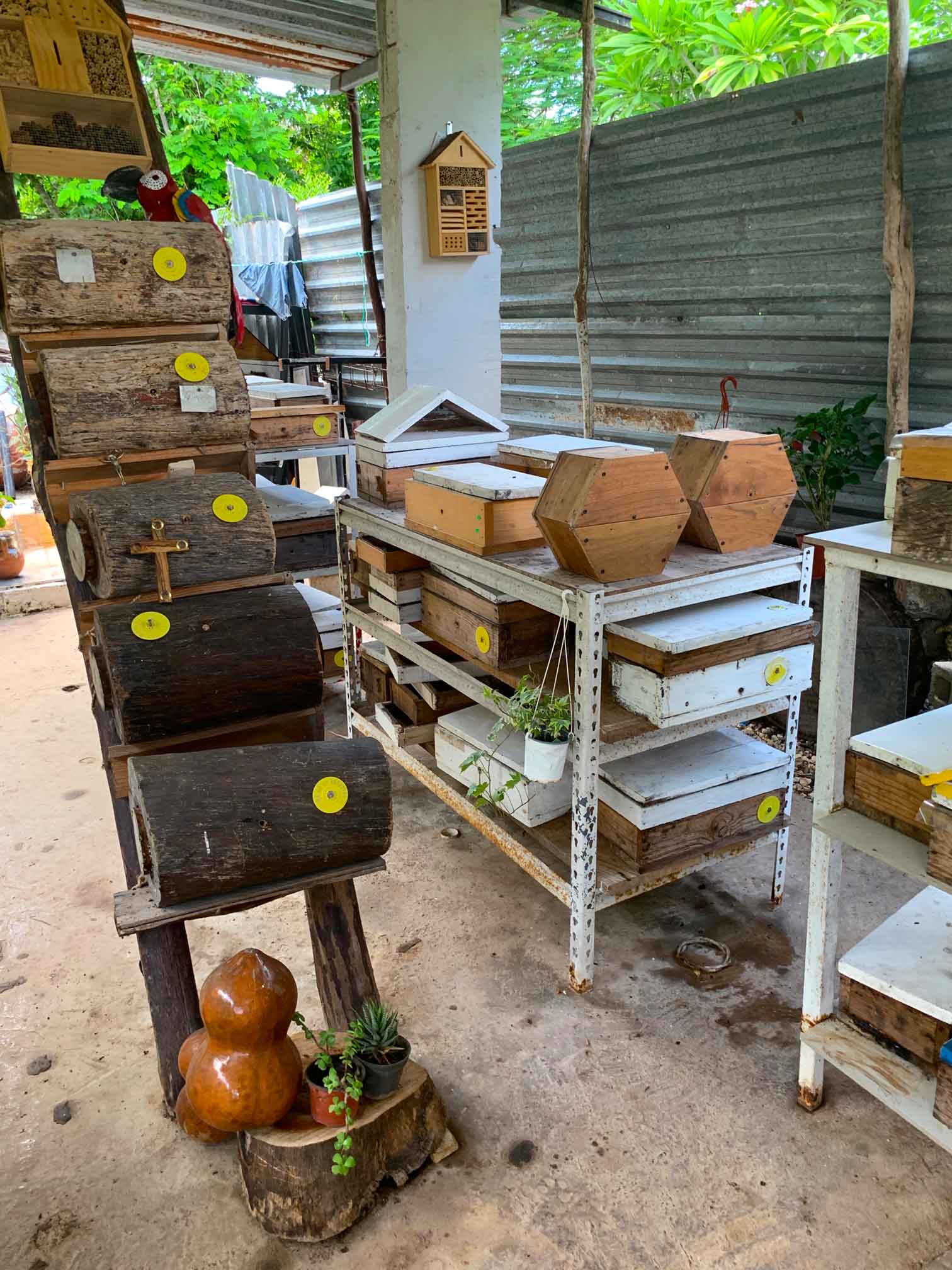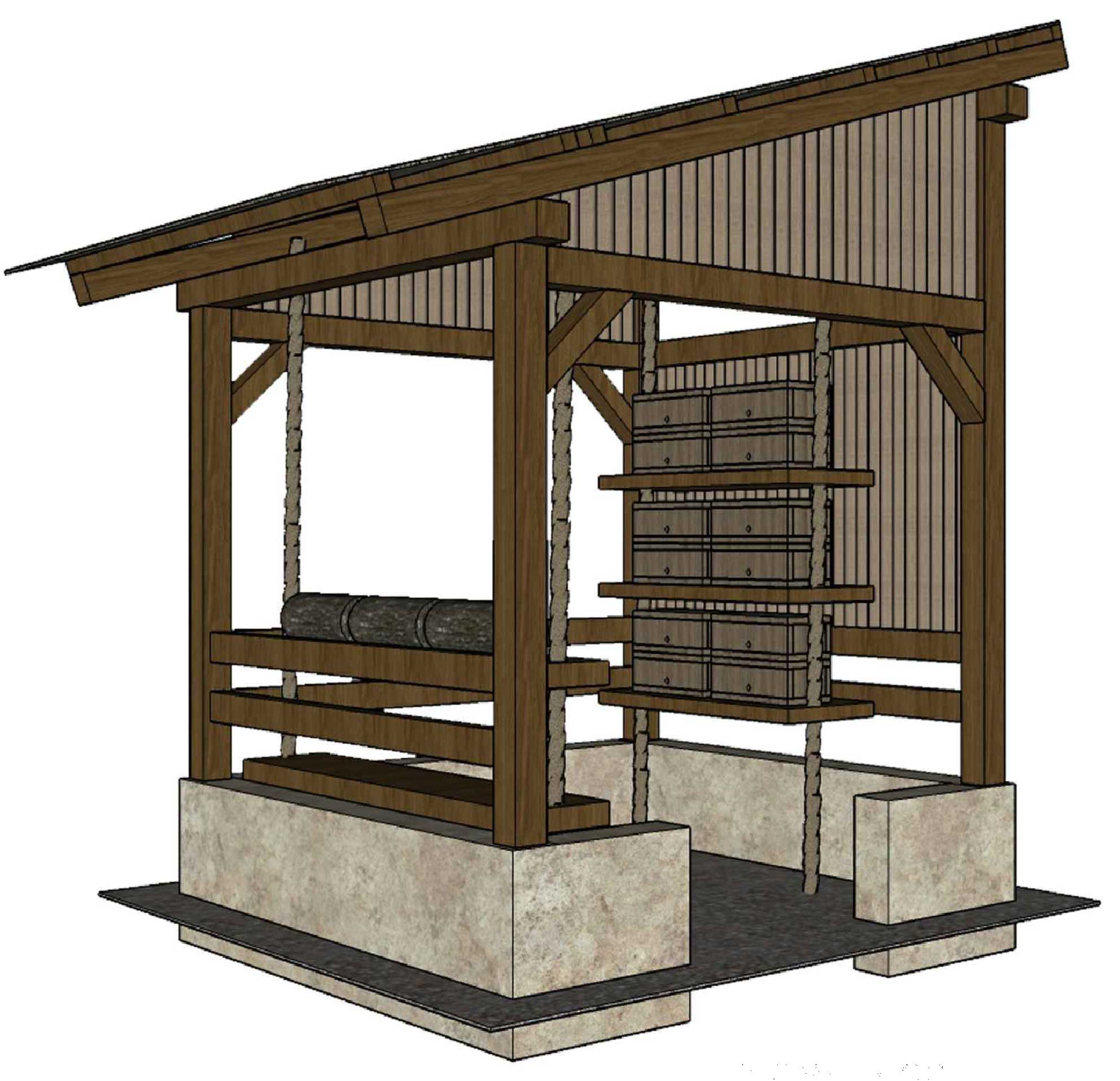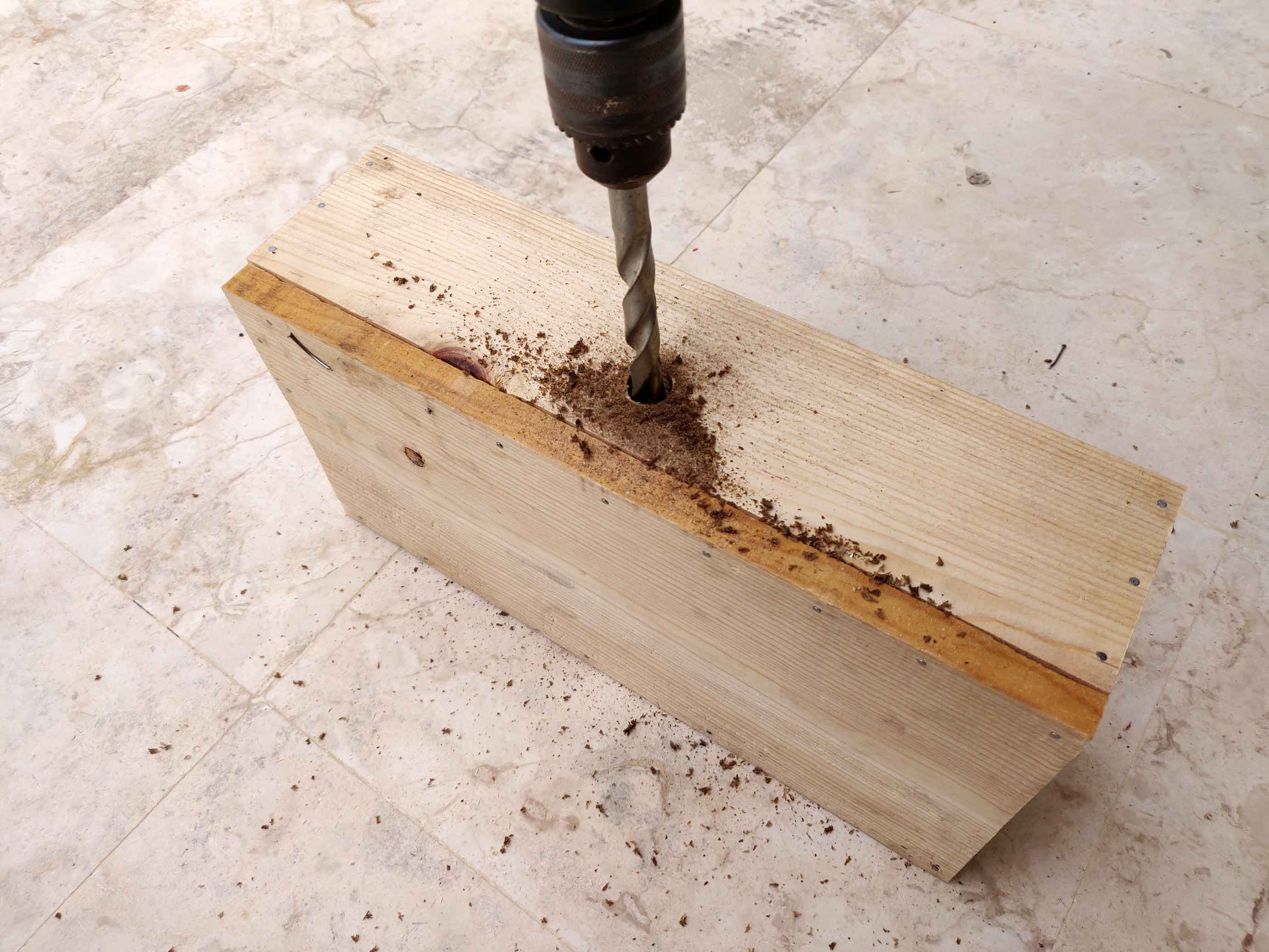The Melipona Bees
The Melipona bees (melipona beecheii) also known as “The sacred Mayan bee” or stingless bees, It has been used for thousands of years by the Pre-Hispanic Maya of Mexico and Guatemala because its honey and waxes have multiple medicinal functions such as cell regeneration, its help to the immune system and the elimination of bacteria, scarring, etc. (www.beecheii.com, 2019).
The melipona beecheii lives in the jungle of the Yucatan Peninsula. These native bees (from the Trigona and Meliponines group) make their nests inside the hollow parts of the medium and low forest trees (15 to 20 meters high). The presence of the bee “Xunancab” or “colelcab” is an indicator of mature rainforests in good conditions.
Meliponiculture is one of several activities in the backyard that have been inherited from Mayan culture. The beehives are placed on the lot to facilitate their handling and care but they can also be in the bushes or in the cornfields. Currently, the production of honey from stingless bees is present in the Mayan communities attended mainly by women and the honey is used locally.

Photography: Ana Icaza Leyva
“The main threats to bees are deforestation and the indiscriminate use of pesticides.”
REPRODUCTION
They live in permanent colonies with a queen, when she dies the “princess” is prepared to replace it; these colonies are never exchanged, a new colony can be formed separating the queen bee and taking her to another place where a new colony will begin.
For the division of the colonies it is recommended to do so between the months of February and March, which It is the time when there is more nectar flow in the Yucatan Peninsula. Also, in this period the bee colonies seem to have a high population (including the population of drone bees). (González- Acereto, 1991).

Fotografía: Ana Icaza Leyva

Fotografía: Ana Icaza Leyva
It’s better to have colonies with strong populations, which we would call “mother colonies”, so that from these Mother Colonies the division is carried out, since sufficient offspring is required to begin a new colony. It is recommended to take offspring about to emerge (preferably six to seven breeding honeycombs) so that the division has a strong population and at the same time is it is necessary to transfer adult bees to the new colony “child colony”, this can be done with a small net.
We suggest to place small strips of wood or wax to keep the combs separated from the base floor. Also 1 cm high pillars must be placed formed by Africanized beeswax mixed with cerumen of native bees among the different honeycombs. These pillars allow spaces to exist between brood combs so that bees can transit freely between them. (Villanueva Gutiérrez R).

Photography: Ana Icaza Leyva
THE MELIPONARY
“Hobon” models (beehive in Maya) have been designed to be similar to the natural habitats of the bees to facilitate the management of the production and extraction of honey. The meliponary will be established in any property to take advantage of the proximity of the plants producing nectar and pollen that is the bee’s essential food. The vegetation to sow in the surrounding area must be primarily native trees and flowers.

Photography: Ana Icaza Leyva
The beehives will be established inside the hatchery, stacking them on wooden strips that are placed horizontally, this to protect the colonies from their natural enemies.
It can be complemented with some natural repellents such as Neem tree (Azadirachta indica), to keep the hives safe from any intruder, and with wooden structures which will form the appropriate structural support for their safety.

Ápiron Mx

Corte: Ápiron Mx

Corte: Ápiron

Render: Ápiron Mx
HOW TO MAKE YOUR OWN BEEHIVE
1.Buy two solid wood planks, one of 20cm and another of 10cm, and link them to cut them with the following measures. The 20cm in 40cm cuts, the 10cm in four 40cm cuts and the remaining in 16.5cm cuts to form the wooden box.

Photography: Ana Icaza Leyva
2. Assemble the box as shown in the picture, with 2-inch wood nail. It is recommended to sand the splinters in the wood for future handling.

Photography: Ana Icaza Leyva
3. Once the box is done, take a coin and place it in the center of the biggest side, that is 40cm, measure one inch up and place it to mark the entrance of the bees.

Photography: Ana Icaza Leyva
4. Using a wood drill make the hole in the beehive.

Photography: Ana Icaza Leyva
5. Fill the imperfections of the beehive with beeswax or some mud with water.

Photography: Ana Icaza Leyva
We thank Mrs. Deysi Dzul Chalé of the Jats ´uts Kaab Meliponario “Nice bee” for the information granted for the realization of this article.

Photography: Ana Icaza Leyva
REFERENCES
González Acereto, José Ángel y Quezada Euán José Javier. Producción tradicional de miel: abejas nativas sin aguijón. En Durán R. y M. Méndez (Eds.) 2010. Biodiversidad y desarrollo humano en Yucatán. CICY, PPD-FMAM, CONABIO, SEDUMA. 496 pp. https://www.cicy.mx/Documentos/CICY/Sitios/Biodiversidad/pdfs/Cap7/19%20Produccion%20tradicional%20de%20miel.pdf
Slow Food Mexico. Miel de abeja Xunankab en la península de Yucatán. (2019) https://www.slowfood.mx/baluartes/miel-de-abeja-xunankab-de-la-peninsula-yucatan/ (consulado el 31 julio 2019)
Quezada José Javier y González José Ángel (2009) Potencial de las abejas nativas en polinización de cultivos. Acta boil. Colomb. (online) 14, n.2, pp. 169-172.
Gonzáles Acereto, J. A. (1984). Acerca de la Regionalización de la nomenclatura Maya de las abejas sin aguijón (melipona sp.) en Yucatán. Revista de Geografía agricola, Análisis Regional de la agricultura. Universidad Autónima de Chapingo. Núm. 5 y 6., 190-193
López Santigo Rosa Isela (2014) “Proyecto de inversión para la producción y comercialización de miel de abeja melipona en la comunidad de buenavista bacalar. Informe técnico de residencia profesional. Instituto Tecnológico de la zona maya.
http://www.itzonamaya.edu.mx/web_biblio/archivos/res_prof/ige/ige-2014-12.pdf
Ayala, R. (17 de septiembre de 1999). Revisión de las abejas sin aguijó de México (Hymenótera: Apidae: Meliponini). http://www.academia.edu/2953968/Ayala_R._1999._Revision_de_las_abejas_sin_aguijon_de_Mexico_Hymenoptera_Apidae_meliponini_._Folia_Entomologica_Mexicana_106_1- 123
Villanueva Gutiérrez R, B. S. (s.f.). Crianza y Manejo de la Abeja Xunacab en la Península de Yucatán.









Ola! What a beautiful website. I love your photos and the jobone description with how to build it yourself. Very informative and important info you are sharing. I am in North Carolina, US and am part of The Mayan Melipona Bee Grant Proposal for Mayan beekeeping preservation and empowering women beekeepers. Our site is MAYANMELIPONABEE.org If you would like to apply for any assistance or funding? or would like to offer up your expertise ? Please contact the director Rebecca Robertson about possibly speaking at a future workshop either online or in person, or contact myself directly. Warmly, Linda Go
Hi, do you sell Melipona bees? thank you
Excellent article – thank you! I have a hive attached to the rear of my house on the Ruta de los Cenotes and admire the Melipona.